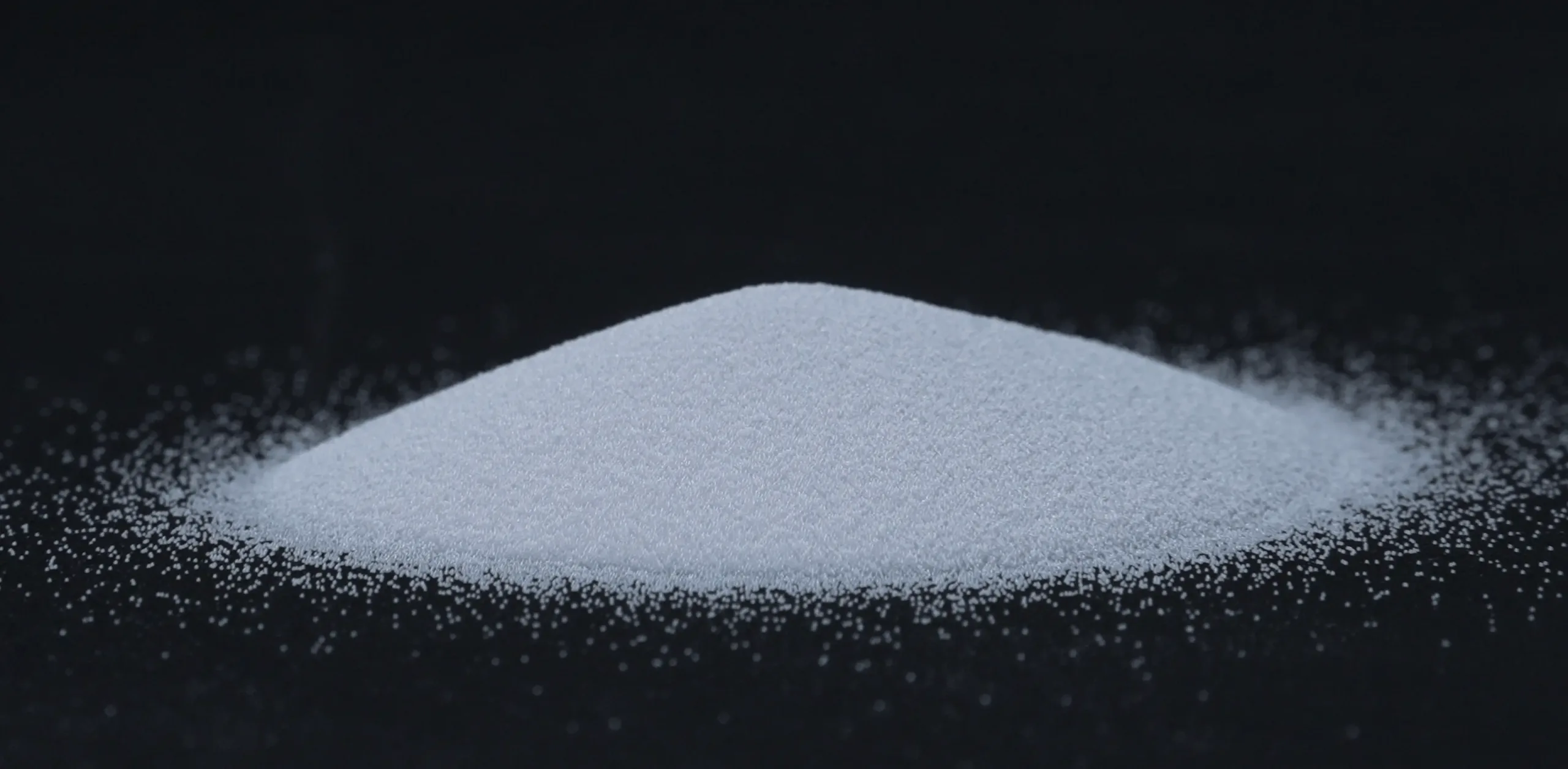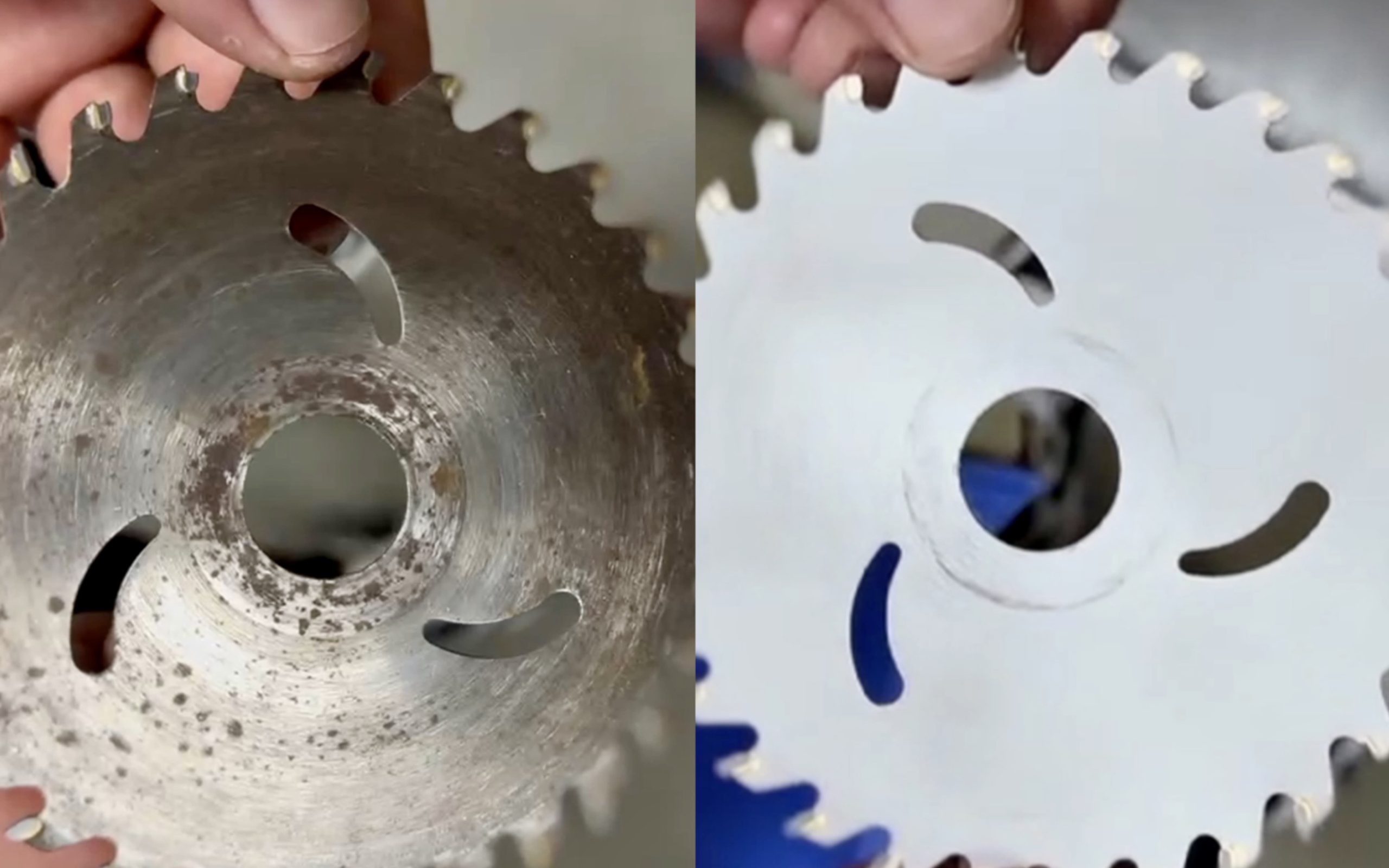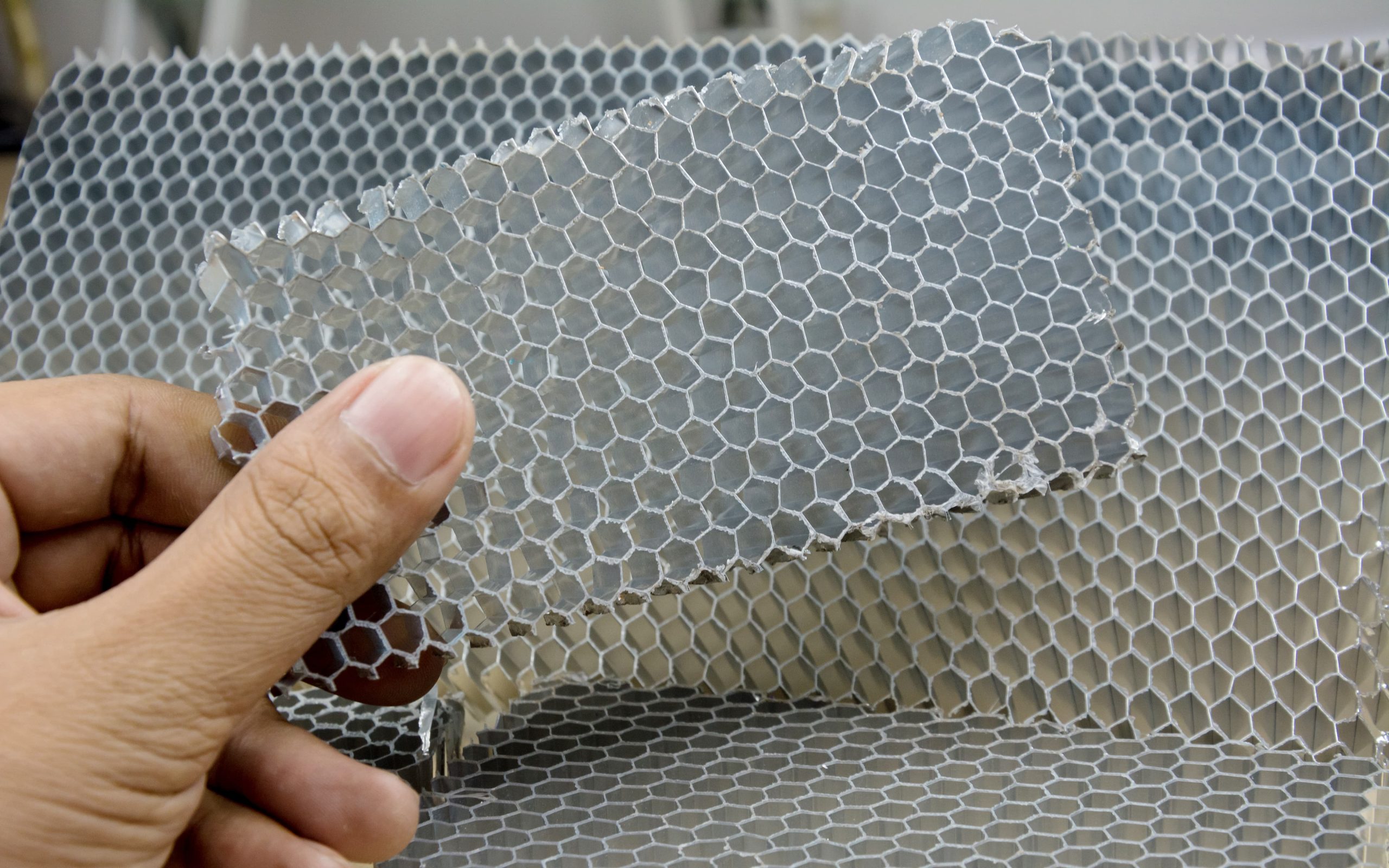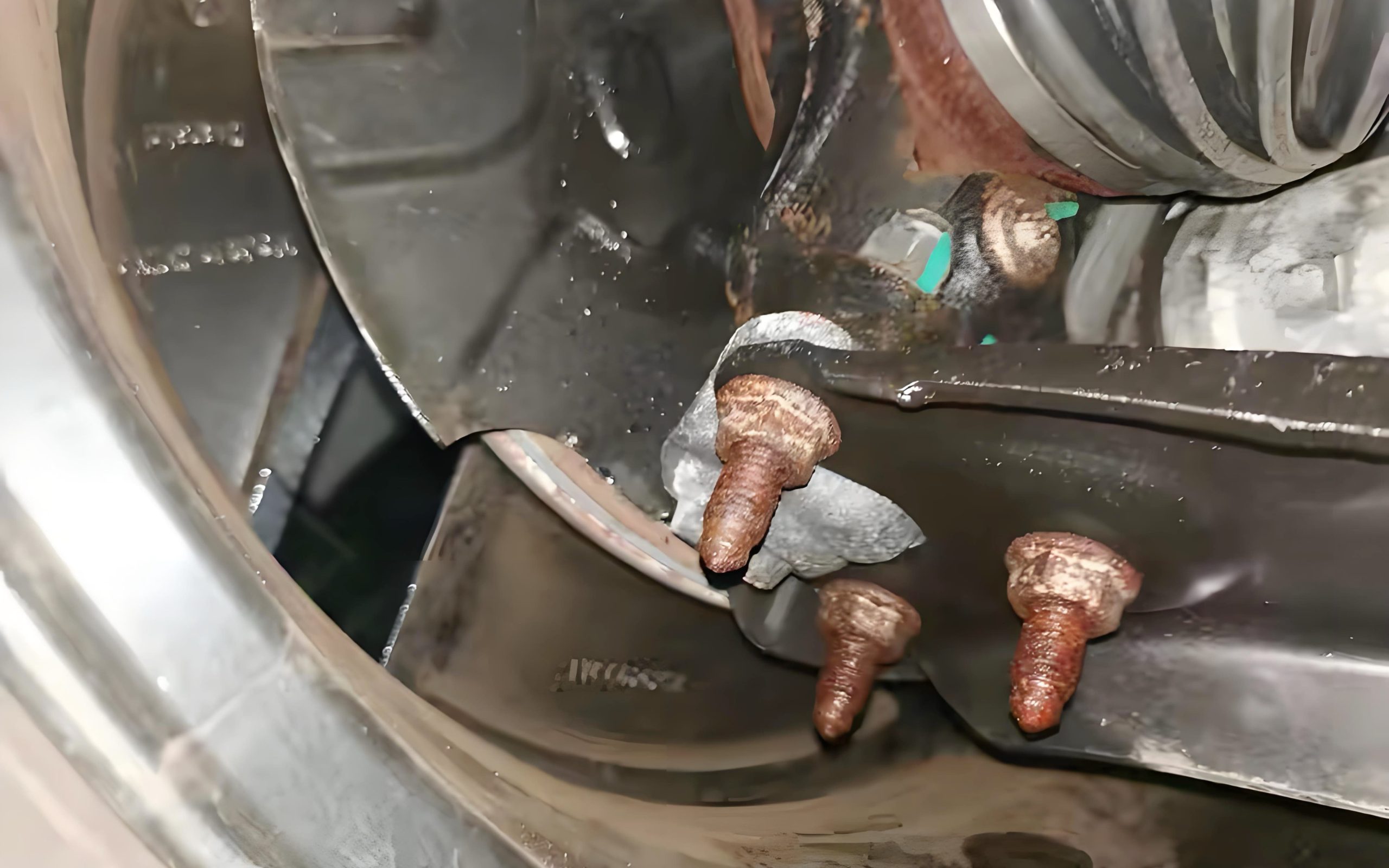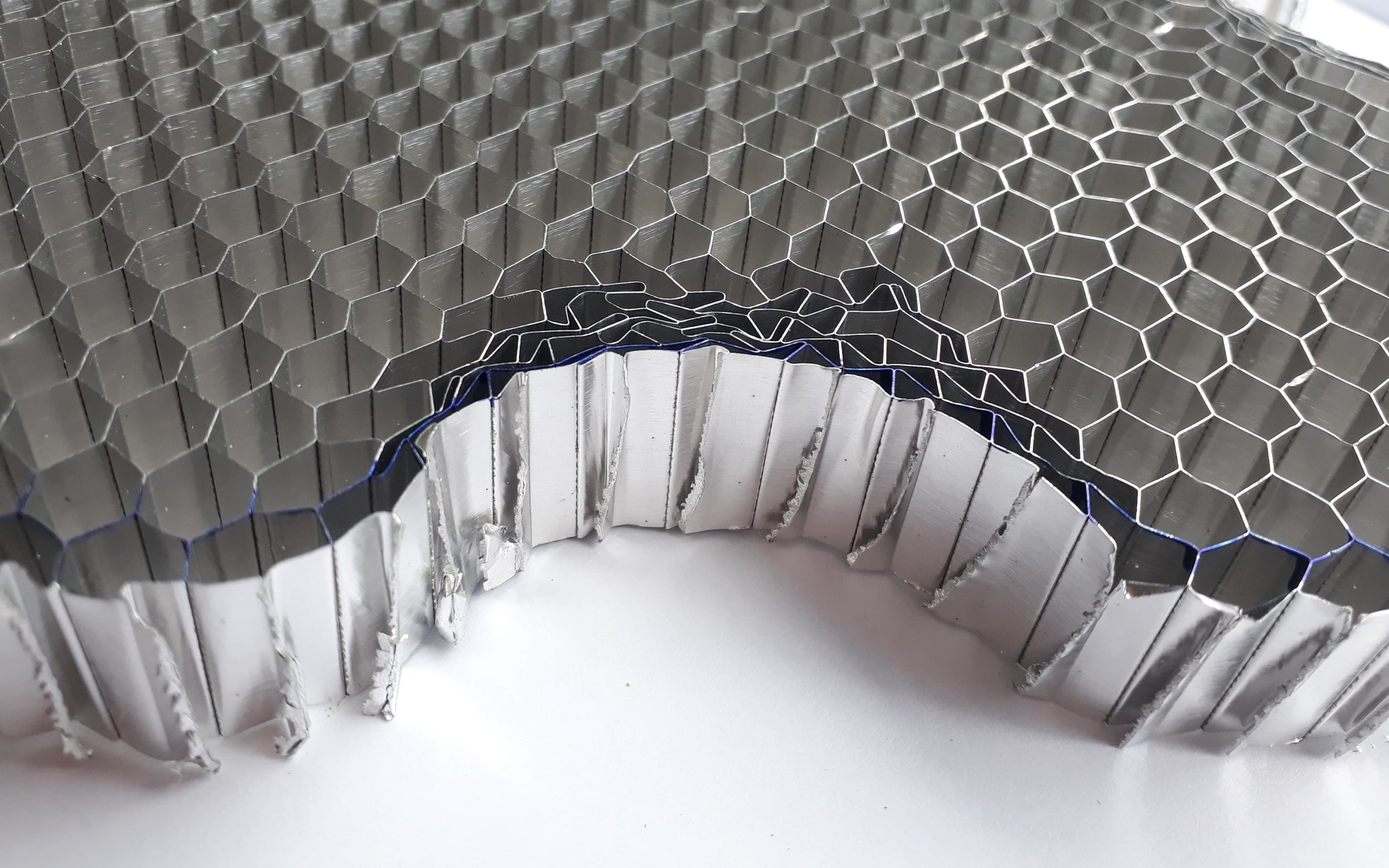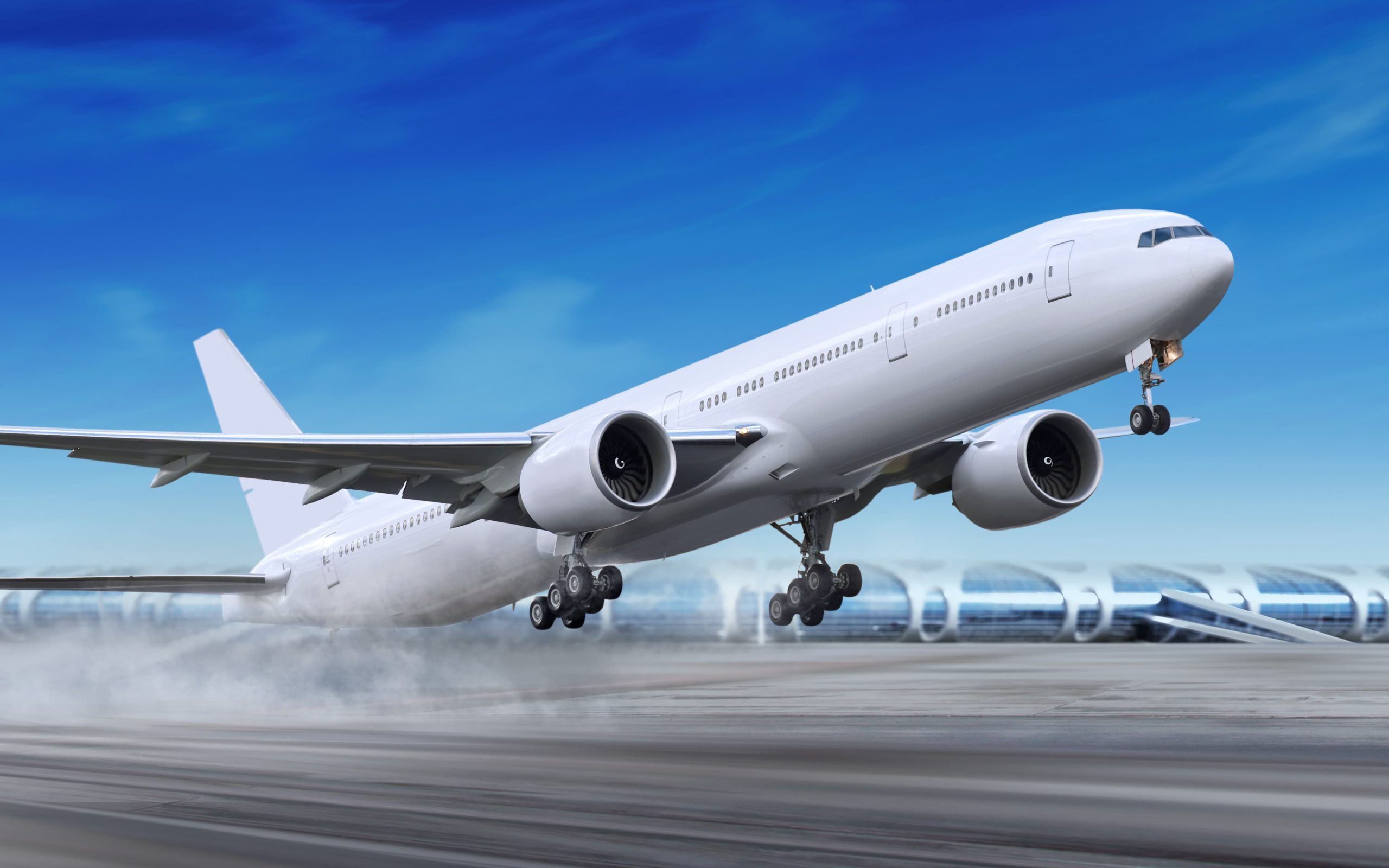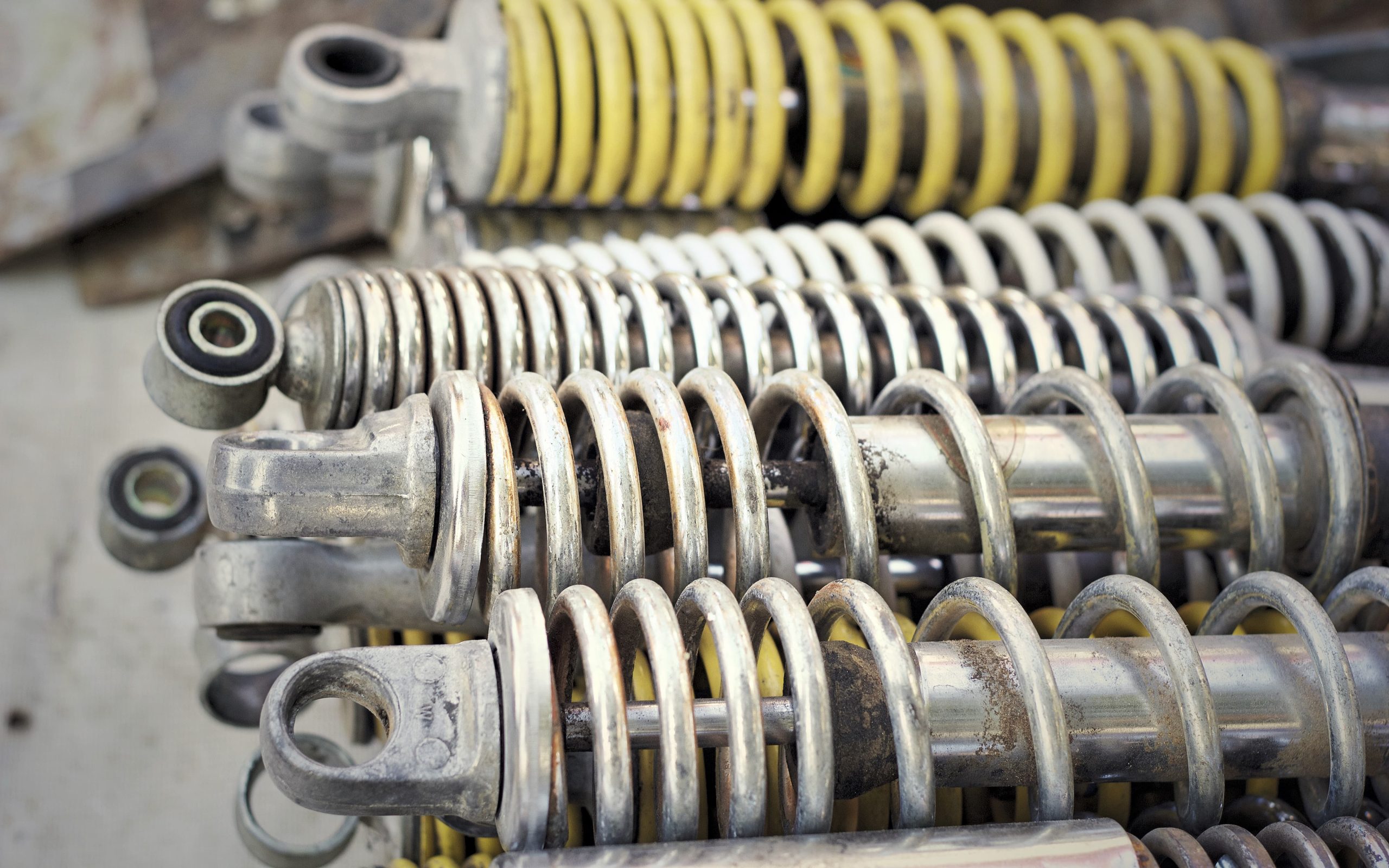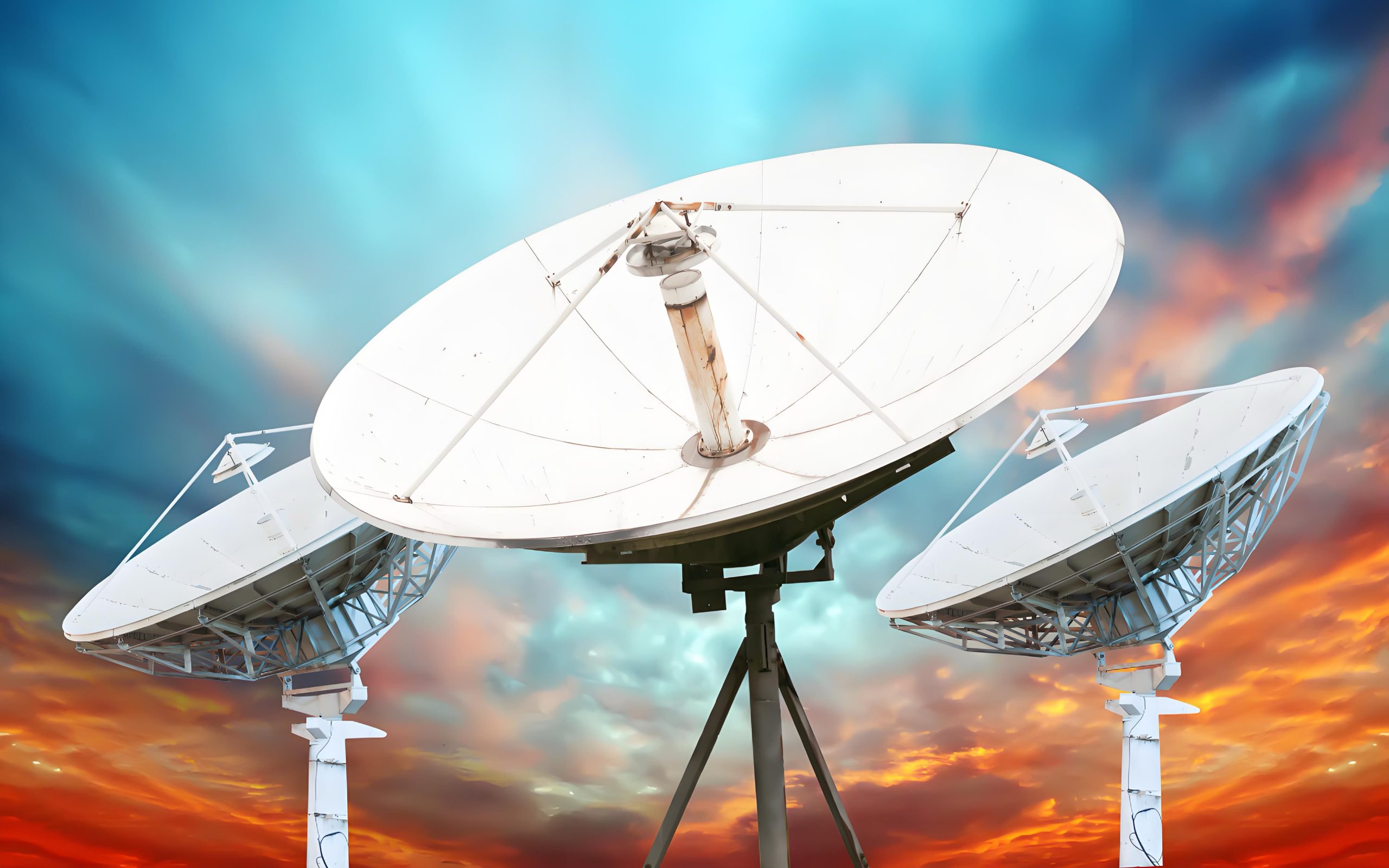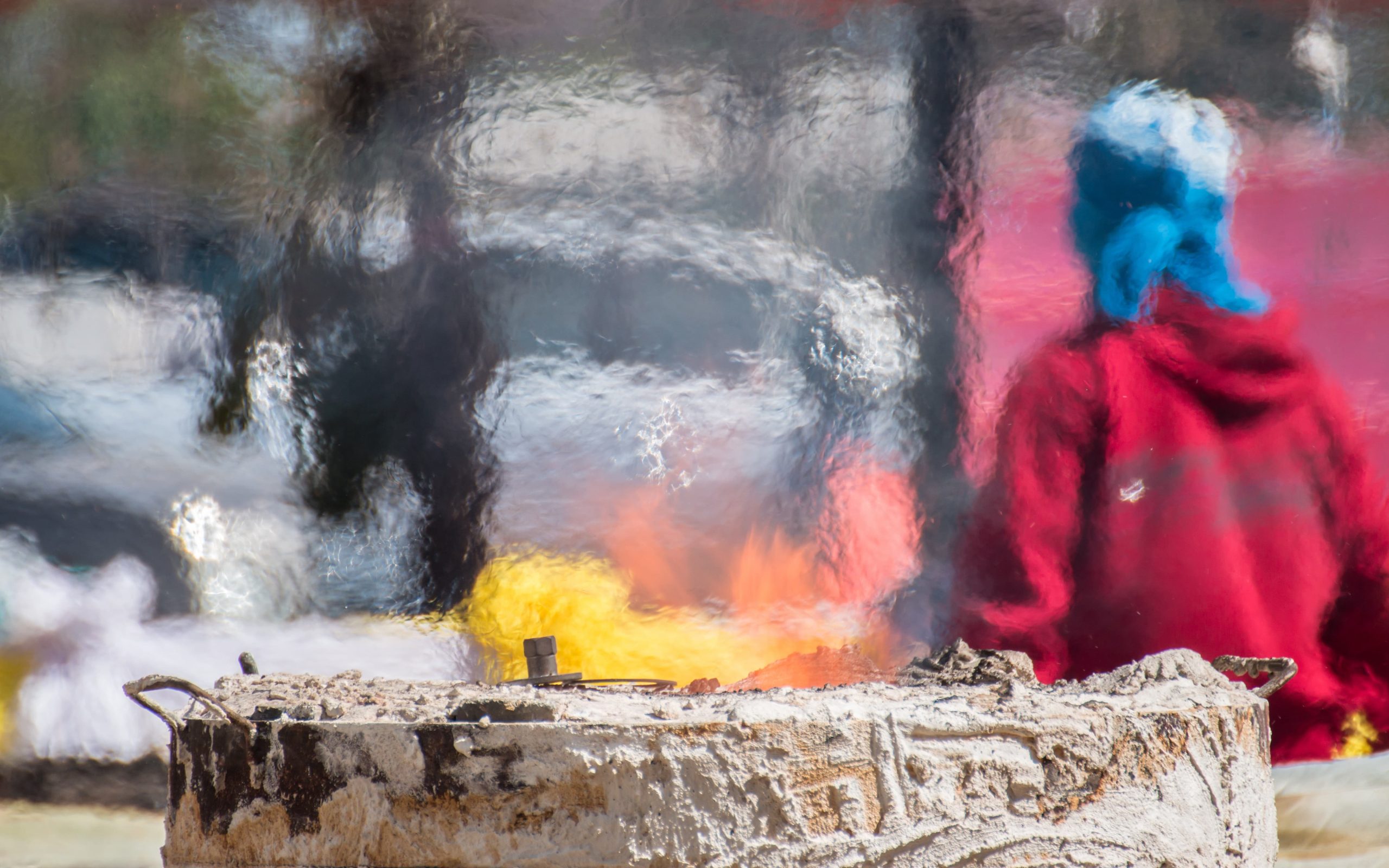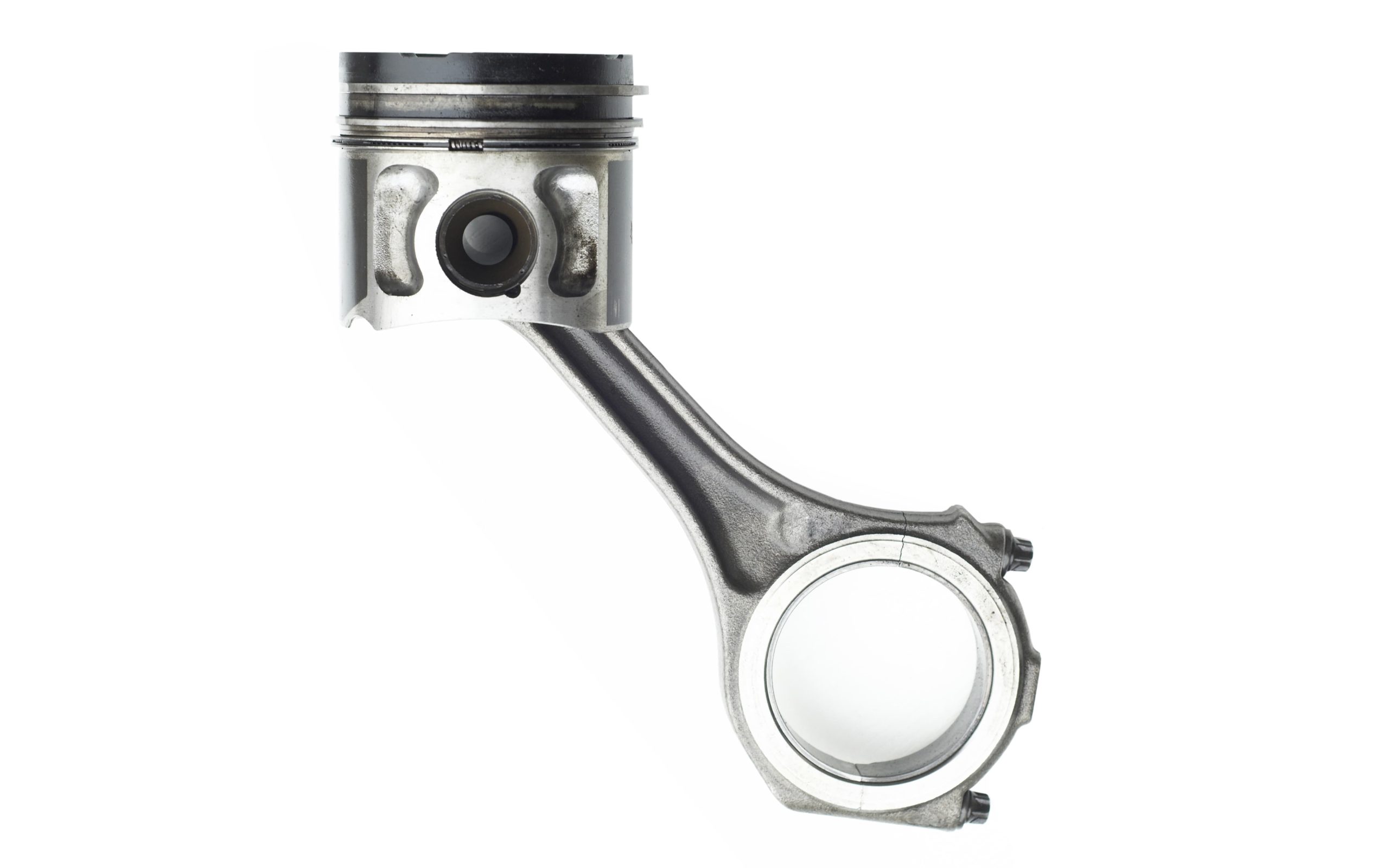Was ist Shotpeening?
5. September 2024

Was ist Shot Peening?
Shot Peening ist eine Oberflächenbehandlungstechnik, bei der die Leistung eines Werkstücks verbessert wird, indem harte Partikel (sogenannte "Shots") mit hoher Geschwindigkeit auf die Oberfläche des Werkstücks geschossen werden. Diese Technologie ist in der Metallverarbeitung, im Automobilbau, in der Luft- und Raumfahrt und in anderen Bereichen weit verbreitet. Ihr Hauptzweck besteht darin, die physikalischen Eigenschaften des Werkstücks, wie Festigkeit, Verschleißfestigkeit und Oberflächenqualität, zu verbessern, indem die Oberfläche des Werkstücks mit Partikeln beschossen wird.
Grundsatz
Das Grundprinzip des Kugelstrahlens besteht darin, durch den Aufprall von Hochgeschwindigkeitspartikeln auf die Werkstückoberfläche eine Druckspannungsschicht zu erzeugen, die die an der Oberfläche auftretenden Zugspannungen ausgleicht und die Ermüdungsfestigkeit des Materials verbessert. Der Hochgeschwindigkeitsaufprall der Partikel bewirkt eine plastische Verformung der Oberflächenschicht des Werkstoffs. Diese Verformung verbessert nicht nur die Oberflächenqualität, sondern auch die mechanischen Eigenschaften des Werkstoffs. Nach dem Kugelstrahlen werden die Oberflächenrisse und -defekte des Materials wirksam reduziert, und die Haltbarkeit wird weiter verbessert.
Material
Das Material der Strahlmittel ist vielfältig, und verschiedene Materialien eignen sich für unterschiedliche Bearbeitungsanforderungen:
- Stahlschrot: hohe Härte, die häufig für die Bearbeitung von Metallwerkstoffen verwendet wird, kann Oberflächenoxidschichten und Schmutz wirksam entfernen.
- Schrot aus rostfreiem Stahl: korrosionsbeständig, geeignet für den Einsatz in Bereichen mit hohen Umweltanforderungen.
- Keramischer SchussHohe Härte, wird häufig zur Entfernung von Oberflächenschmutz und zur Verbesserung der Oberflächenqualität verwendet und eignet sich für Gelegenheiten mit hohen Präzisionsanforderungen.
- Glas SchussWeicher, geeignet für die feine Oberflächenbehandlung, z. B. zur Beseitigung kleinerer Oberflächenfehler.
Anmerkung: Wenn die Oberfläche keine Eisenverunreinigungen verträgt, sollte man Edelstahl-, Keramik- oder Glaskugeln in Betracht ziehen.

Keramik-Peening-Perlen
Geschichte des Shot Peening
Die Entwicklung der Shotpeening-Technologie spiegelt den Fortschritt der industriellen Fertigungstechnik wider. Vom anfänglichen manuellen Betrieb bis hin zu modernen automatisierten Anlagen ist die Kugelstrahltechnik in verschiedenen Bereichen weit verbreitet und kontinuierlich verbessert worden.
Frühe Entwicklung
Der Ursprung der Kugelstrahltechnik lässt sich bis ins frühe 19. Jahrhundert zurückverfolgen, als das Kugelstrahlen hauptsächlich zur Verfestigung von Metallteilen eingesetzt wurde. Die frühen Kugelstrahlanlagen wurden in der Regel manuell betrieben und waren weniger effizient, legten aber den Grundstein für die spätere technologische Entwicklung.
Modernisierungsprozess
- Anfang des 20. Jahrhunderts: Mit der fortschreitenden Industrialisierung wurde die Technologie des Kugelstrahlens immer ausgereifter. Das Aufkommen von automatisierten Kugelstrahlanlagen verbesserte die Effizienz und Konsistenz der Verarbeitung erheblich, so dass die Kugelstrahltechnik weit verbreitet ist.
- Technologische Innovation: In der Mitte des 20. Jahrhunderts erfuhr die Kugelstrahltechnik eine Reihe von Innovationen, darunter Verbesserungen bei den Werkstoffen und der Ausrüstung, die das Kugelstrahlverfahren präziser machten. Das Aufkommen neuer Strahlmittel und Strahlanlagen hat die Behandlungswirkung und die Produktionseffizienz des Kugelstrahlens verbessert.
Wichtige Meilensteine
- Patentanmeldung: Die Patentanmeldung für die Kugelstrahltechnik markiert die Formalisierung und Standardisierung der Technologie, die die Entwicklung und Anwendung der Kugelstrahltechnik fördert.
- Industrienormen: Die SAE-Normen für das Kugelstrahlen zum Beispiel standardisieren das Kugelstrahlverfahren und bieten einheitliche Betriebsrichtlinien für alle Lebensbereiche.
Was sind die Shot Peening Anlagen?
Es gibt viele Arten von Kugelstrahlanlagen, die den unterschiedlichen Anforderungen an die Oberflächenbehandlung gerecht werden. Von pneumatischen Verfestigungsstrahlanlagen bis hin zu vollautomatischen Verfestigungsstrahlsystemen hängt die Wahl der Ausrüstung von den spezifischen Anwendungsszenarien und Behandlungsanforderungen ab. Zu den Typen und Konfigurationen von Kugelstrahlanlagen gehören hauptsächlich die folgenden:
- Shotpeening-Maschine
Shotpeening-Maschinen sind das Herzstück des Shotpeenings. Mit diesen Geräten werden der Fluss, die Geschwindigkeit und die Richtung der Partikel gesteuert, um den gewünschten Behandlungseffekt zu erzielen. Betriebsparameter wie Druck, Geschwindigkeit, Partikelgröße und -form haben einen großen Einfluss auf die Wirkung des Kugelstrahlens. Je nach Aufbau und Anwendung können sie in die folgenden Typen unterteilt werden:
- Pneumatische Kugelstrahlmaschine: Verwenden Sie Druckluft, um Kugeln mit hoher Geschwindigkeit auf die Oberfläche des Werkstücks zu sprühen, geeignet für die Behandlung von kleinen und mittelgroßen Teilen. Pneumatische Kugelstrahlmaschinen sind einfach zu bedienen und leicht zu warten, aber die Bearbeitungseffizienz ist relativ gering.
- Zentrifugalkugelstrahlmaschine: Das Strahlmittel wird durch die Zentrifugalkraft auf die Oberfläche des Werkstücks geschleudert, was für die Massenproduktion und die Bearbeitung großer Werkstücke geeignet ist. Die Zentrifugalkugelstrahlmaschine hat eine gleichmäßige Verarbeitung und hohe Effizienz und eignet sich für Gelegenheiten, die eine feine Verarbeitung erfordern.
- Trommel-Kugelstrahlmaschine: Das Werkstück wird in die Trommel gelegt und von der Kugelstrahlanlage bearbeitet. Die Trommel-Strahlanlage ist für die Bearbeitung von unregelmäßig geformten Teilen geeignet, insbesondere für Automobilteile und kleine Metallteile.
- Hängende Kugelstrahlmaschine: Das Werkstück wird mit einer Aufhängevorrichtung im Strahlraum aufgehängt und von der Kugelstrahlanlage bearbeitet. Sie eignet sich für die Bearbeitung großer oder schwerer Werkstücke, wie z. B. mechanische Teile und Konstruktionsteile.
- Shotpeening-Raum: Ein geschlossener Raum, der mit einer Kugelstrahlmaschine ausgestattet ist und in dem Werkstücke und Strahlanlagen untergebracht sind. Der Shotpeening-Raum kann die Partikelstreuung während des Shotpeening-Prozesses wirksam kontrollieren und die Arbeitsumgebung sauber halten.
- Hauptkomponenten einer Kugelstrahlmaschine
- Düse: Die Düse ist für die Beschleunigung und den Ausstoß des Strahls auf die Oberfläche des Werkstücks verantwortlich. Die Konstruktion und das Material der Düse wirken sich direkt auf die Effizienz und den Effekt des Kugelstrahlens aus.
- Kugelfördersystem: Fördert die Schüsse zur Düse, einschließlich Komponenten wie Trichter und Förderleitungen.
- Rückgewinnungssystem: Sammelt die während des Kugelstrahlens verstreuten Kugeln und setzt sie wieder ein, um die Materialausnutzung zu verbessern und die Kosten zu senken.
- Kontrollsystem: Dient zur Einstellung der Betriebsparameter der Kugelstrahlmaschine, wie Druck, Geschwindigkeit und Spritzwinkel, um die Konsistenz und Kontrollierbarkeit des Behandlungseffekts zu gewährleisten.
Kann es automatisiert werden?
Das Verfestigungsstrahlen kann manuell oder automatisch erfolgen. Die spezifische Arbeitsmethode hängt von der Art der Kugelstrahlanlage, den Bearbeitungsanforderungen des Werkstücks und dem Umfang der Produktion ab.
Manuelle Bedienung
- Manuelles Shotpeening: In einigen kleinen Produktionsbetrieben oder bei der Bearbeitung spezieller Werkstücke kann es erforderlich sein, die Kugelstrahlanlage manuell zu bedienen. In diesem Fall muss der Bediener die Einstellungen der Verfestigungsstrahlanlage manuell vornehmen und die Richtung und den Bereich des Verfestigungsstrahlens steuern. Das manuelle Verfestigungsstrahlen eignet sich für Situationen, in denen besondere Anforderungen an den Behandlungseffekt gestellt werden, wie z. B. bei der Reparatur von Kleinteilen oder bei der Feinbearbeitung von Oberflächen.
- Manuelle Unterstützung: Auch bei einer automatisierten Kugelstrahlanlage ist eine manuelle Bedienung erforderlich. Der Bediener muss regelmäßig den Betriebszustand der Anlage überprüfen und Wartungs- und Reinigungsarbeiten durchführen, um den reibungslosen Ablauf des Kugelstrahlprozesses zu gewährleisten.
Automatisierter Betrieb
- Vollautomatische Kugelstrahlmaschine: Moderne Kugelstrahlanlagen arbeiten zunehmend mit automatisierten Steuerungssystemen, die verschiedene Schritte des Kugelstrahlprozesses, einschließlich Werkstücktransport, Kugelstrahlen und Recycling, automatisch durchführen können. Vollautomatische Kugelstrahlanlagen können die Produktionseffizienz verbessern, die Gleichmäßigkeit der Behandlungseffekte gewährleisten und den Bedarf an menschlichen Eingriffen verringern.
- Robotersystem zum Kugelstrahlen: Bei einigen komplexen Verfestigungsstrahlen werden Industrieroboter für die Verfestigungsstrahlen eingesetzt. Roboter-Kugelstrahlanlagen können den Winkel und die Position des Kugelstrahls genau steuern und eignen sich für die Bearbeitung von Werkstücken mit komplexen Formen oder hohen Präzisionsanforderungen.
- Intelligentes Kugelstrahlsystem: Shot-Peening-Systeme, die künstliche Intelligenz und Datenanalysetechnologie kombinieren, können die Parameter des Shot-Peening-Prozesses in Echtzeit überwachen und anpassen, um die Behandlungswirkung zu optimieren. Diese Systeme können Probleme im Kugelstrahlverfahren automatisch erkennen und anpassen, menschliche Eingriffe reduzieren und die Produktionseffizienz und -qualität verbessern.
Obwohl moderne Kugelstrahlanlagen zunehmend automatisiert werden, sind manuelle Bedienung und Überwachung nach wie vor wichtig, um den reibungslosen Ablauf des Kugelstrahlprozesses zu gewährleisten. Unabhängig davon, ob es sich um einen manuellen Betrieb oder ein automatisiertes Shotpeening-System handelt, ist das Verständnis der Funktion und der Arbeitsweise der Anlage entscheidend, um den besten Behandlungseffekt zu erzielen.
Wie misst man den Shot Peening Effekt?
Die Messung der Auswirkungen des Kugelstrahlens erfordert in der Regel eine Bewertung unter folgenden Gesichtspunkten:
- Härte der Oberfläche: Durch das Kugelstrahlen soll die Härte der Materialoberfläche deutlich verbessert werden, was mit einem Härtemessgerät gemessen werden kann.
- Oberflächenrauhigkeit: Die Oberflächenmorphologie und -rauheit des Materials ändert sich nach dem Kugelstrahlen, was mit einem Oberflächenrauhigkeitsmessgerät beurteilt werden kann.
- Tiefe der Druckspannungsschicht: Beim Shotpeening bildet sich eine Druckspannungsschicht auf der Oberfläche des Werkstoffs. Die Tiefe der Druckspannung kann durch Röntgenbeugung oder Mikrohärteprüfung gemessen werden.
Es ist erwähnenswert, dass John Almen eine standardisierte Methode zur Messung der Wirksamkeit des Kugelstrahlens erfunden hat, den sogenannten Almen-Test. Bei dieser Methode wird die Auswirkung der Druckspannung mit Hilfe eines speziellen Prüfkörpers (Almen-Prüfkörper) bewertet und die durch das Kugelstrahlen verursachte Biegung aufgezeichnet.
Die einzelnen Schritte sind wie folgt:
- Almen-Teststück: Es handelt sich um ein Stahlstück mit Standardstärke, das während des Kugelstrahlverfahrens geprüft wird.
- Messung der Biegung: Nach dem Verfestigungsstrahlen biegt sich das Prüfstück bis zu einem gewissen Grad, und der Biegegrad wird mit einem speziellen Messgerät (Almen-Bogenhöhenmesser) gemessen.
- Die Bogenhöhe zeigt die Festigkeit an: Der gemessene Biegebetrag wird als Bogenhöhe bezeichnet, die die Intensität der durch das Verfestigungsstrahlen verursachten Druckspannung auf der Materialoberfläche angibt. Je größer die Bogenhöhe ist, desto stärker ist die aufgebrachte Druckspannung.
- Kontrolle des Shotpeening-Effekts: Der Almen-Test kann die Wirkung des Kugelstrahlens effektiv kontrollieren und die Konsistenz und Qualität der Verarbeitung sicherstellen. Es ist weit verbreitet in der Qualitätskontrolle in der Luft-und Raumfahrt, Automobil-und anderen Bereichen verwendet.
- Ermüdungsfestigkeit: Kugelstrahlen kann die Dauerfestigkeit des Materials verbessern, die durch Ermüdungstests ermittelt werden kann.
- Morphologie der Oberfläche: Verwenden Sie ein Rasterelektronenmikroskop (REM), um die Oberflächenmikrostruktur zu beobachten und zu analysieren, ob die Oberfläche den gewünschten Effekt erzielt.
Shot Peening Anwendungsszenarien
Die Kugelstrahltechnik spielt eine wichtige Rolle bei der Verbesserung der Materialleistung und der Oberflächenqualität und wird in vielen Bereichen eingesetzt.
Wirkung
- Verbessern Sie die Dauerfestigkeit: Beim Shot Peening wird durch den Aufprall eine Druckspannungsschicht erzeugt, die die Ermüdungsfestigkeit des Materials erheblich verbessert und das Auftreten von Rissen verringert. Diese Art der Bearbeitung ist besonders wichtig in anspruchsvollen Bereichen wie der Luft- und Raumfahrt und der Automobilherstellung.
- Verbesserte Verschleißfestigkeit: Durch das Kugelstrahlen wird die Oberflächenhärte des Werkstoffs erhöht und damit die Verschleißfestigkeit verbessert. Dieser Effekt ist entscheidend für stark beanspruchte Bauteile wie Maschinen und Werkzeuge.
- Verbesserung der Oberflächenqualität: Durch das Kugelstrahlen können Oberflächenverunreinigungen entfernt, die Oberflächenbeschaffenheit des Werkstücks verbessert, das Aussehen verbessert und es schöner gemacht werden.
Anwendungsszenarien
- Herstellung von Automobilen: Zur Oberflächenbehandlung von Motorteilen, Getriebesystemen und anderen Komponenten, um deren Lebensdauer und Zuverlässigkeit zu verbessern. So kann beispielsweise das Kugelstrahlen die Ermüdungsfestigkeit von Motorkomponenten wirksam verbessern und die Ausfallrate verringern.
- Luft- und Raumfahrt: Die Shot-Peening-Technologie spielt eine wichtige Rolle bei der Bearbeitung von Schlüsselkomponenten wie Flugzeugtriebwerken und Rumpfstrukturen. Das Verfestigungsstrahlen erhöht die Festigkeit und Haltbarkeit dieser Bauteile und gewährleistet ihre Zuverlässigkeit in extremen Umgebungen.
- Bauwesen: Wird für die Korrosionsschutzbehandlung von Stahlkonstruktionen verwendet, um deren Haltbarkeit zu verbessern. Bei Bauprojekten kann das Strahlen die Korrosion von Stahlkonstruktionen wirksam verhindern und ihre Lebensdauer verlängern.
- Metallverarbeitung: Zur Entfernung von Oxidschichten, Schweißspritzern usw. von Metalloberflächen, um die Sauberkeit und Qualität von Metalloberflächen zu verbessern.
- Medizinische Geräte: Shotpeening verbessert die Biokompatibilität und Haltbarkeit von Implantaten. Durch das Shotpeening wird die Oberfläche des Implantats glatter, was zu einer besseren Integration in das Körpergewebe beiträgt.
- Mechanische Ausrüstung: Wird für die Wartung und Reparatur großer mechanischer Anlagen verwendet. Kugelstrahlen kann die Arbeitseffizienz und Lebensdauer der Ausrüstung verbessern.
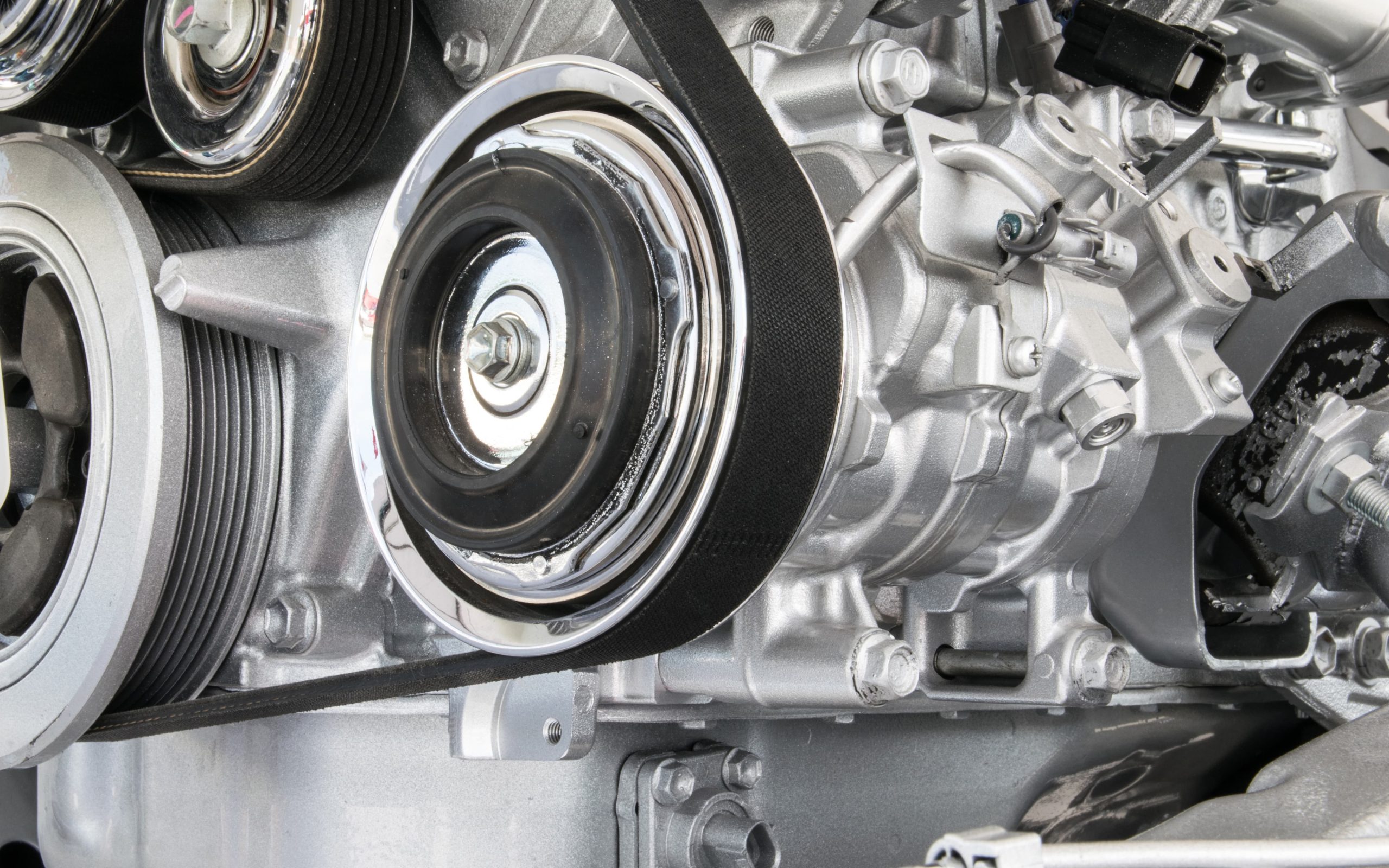
Motorenkomponenten müssen ihre Ermüdungsfestigkeit verbessern
Der Unterschied zwischen Kugelstrahlen und Sandstrahlen
Shotpeening und Sandstrahlen sind beides Technologien zur Oberflächenbehandlung. Die Prinzipien der beiden Verfahren sind ähnlich. Beide nutzen Druckluft als Energiequelle, um einen Hochgeschwindigkeitsprojektilstrom auf die Oberfläche des Werkstücks zu sprühen und die physikalischen Eigenschaften der Materialoberfläche durch Hochgeschwindigkeitsaufprall zu verändern. Es gibt jedoch technische Details und einige Unterschiede in der Anwendung.
Verschiedene Medien werden verwendet:
- Sandstrahlen: Es gibt verschiedene Arten von Sandstrahlmitteln, darunter Sand, Glasperlen, Keramikperlen usw. Es eignet sich für die Reinigung großer Flächen, und die Wirkung ist relativ grob.
- Shot Peening: Beim Shot-Peening werden meist Kugeln aus hartem Stahl, rostfreiem Stahl, Keramikkugeln usw. verwendet, die sich für die Verfestigungsbehandlung eignen. Die Anforderungen an den Prozess sind hoch und der Behandlungseffekt ist fein und gleichmäßig.
Unterschiedliche Zwecke und Wirkungen:
- Sandstrahlen: Hauptsächlich zur Entfernung von Oberflächenrost und Schmutz, zur Verbesserung der Oberflächenrauhigkeit und zur Reinigung und Vorbehandlung geeignet.
- Shot Peening: Erhöht die Ermüdungsfestigkeit und Verschleißfestigkeit von Werkstoffen und verbessert die Materialleistung durch Bildung einer Druckspannungsschicht.
Geeignete Materialien sind unterschiedlich:
- Sandstrahlen: Durch die Wahl der geeigneten Größe und Härte des Sandstrahlmaterials kann es auf eine Vielzahl von Materialien angewendet werden: Metall, Glas, Stein, Kunststoff und Verbundwerkstoffe, Holz usw.
- Shot Peening: Dünnblechwerkstücke können nicht bearbeitet werden, da das Werkstück sonst leicht verformt wird. Es kann nur verwendet werden, um Oxidzunder und Rost auf Medien und großen Metallprodukten mit einer Dicke von nicht weniger als 2 mm zu entfernen oder die keine genaue Größe und Konturen erfordern, sowie Guss- und Schmiedeteile, Formsand und alten Farbfilm. Weit verbreitet in kohlenstoffreichem Stahl, rostfreiem Stahl, Aluminiumlegierungen, Titanlegierungen, Magnesiumlegierungen, Messing, Kupferlegierungen und Kunststoffen.
Der zukünftige Entwicklungstrend von Shot Peening
Die künftige Entwicklung der Shotpeening-Technologie wird sich auf technologische Innovationen und Veränderungen der Marktnachfrage konzentrieren.
Technologische Innovation
- Intelligentes Kugelstrahlsystem: Die künftige Verfestigungsstrahltechnologie wird künstliche Intelligenz und Automatisierungstechnik kombinieren, um die Genauigkeit und Effizienz des Verfestigungsstrahlens zu verbessern. Das intelligente Shotpeening-System kann die Bearbeitungsparameter in Echtzeit überwachen und anpassen, um den Bearbeitungseffekt zu optimieren.
- Umweltfreundliche Shotpeening-Technologie: Entwicklung einer schadstoff- und geräuscharmen Kugelstrahltechnik, um den modernen Anforderungen des Umweltschutzes gerecht zu werden. Eine umweltfreundliche Kugelstrahltechnologie wird die Auswirkungen auf die Umwelt verringern und die Sicherheit der Arbeitsumgebung verbessern.
Marktnachfrage
- Hochwertige industrielle Anwendungen: Die Nachfrage nach der Kugelstrahltechnik in High-End-Bereichen wie der Luft- und Raumfahrt und der Medizintechnik wird weiter steigen. In diesen Bereichen werden extrem hohe Anforderungen an die Materialleistung und Oberflächenqualität gestellt, und die Kugelstrahltechnik kann diese strengen Anforderungen erfüllen.
- Miniaturisierung und Präzision: Die Marktnachfrage nach kleinen und präzisen Kugelstrahlanlagen hat zugenommen, um feineren Oberflächenbehandlungsanforderungen gerecht zu werden. So können beispielsweise kleine Kugelstrahlanlagen komplexe Mikroteile bearbeiten und die Anforderungen an eine hochpräzise Bearbeitung erfüllen.
Branchenübergreifende Anwendungen
Die Kugelstrahltechnik wird verstärkt in aufstrebende Branchen wie den 3D-Druck und die Nanotechnologie integriert werden. Diese aufstrebenden Industrien stellen immer höhere Anforderungen an die Oberflächenbehandlung, und die Anwendung der Kugelstrahltechnik wird ihre Einsatzgebiete weiter ausweiten und die Produktqualität und -leistung verbessern.
Die Shot-Peening-Technologie bearbeitet jedes Werkstück sorgfältig mit Hochgeschwindigkeitspartikeln und verbessert so die Druckbeständigkeit und die Gesamtleistung. Ob bei der Festigkeitsbehandlung von Flugzeugtriebwerken oder bei der Verbesserung der Verschleißfestigkeit von Automobilteilen, das Kugelstrahlen verändert still und leise viele unsichtbare Details in unserem Leben. Die Technologie schreitet weiter voran und wird immer intelligenter, umweltfreundlicher und präziser. In Zukunft werden wir erwarten können, dass die Kugelstrahltechnik in immer mehr Bereichen zum Einsatz kommt, von der High-End-Fertigung bis hin zu neuen Technologien, wo sie uns weiterhin höhere Qualität und längere Lebensdauer bringen wird. Shot Peening ist nicht nur der "unsichtbare Held" der Industrie, sondern wird auch weiterhin eine perfekte Zukunft für uns schaffen.




